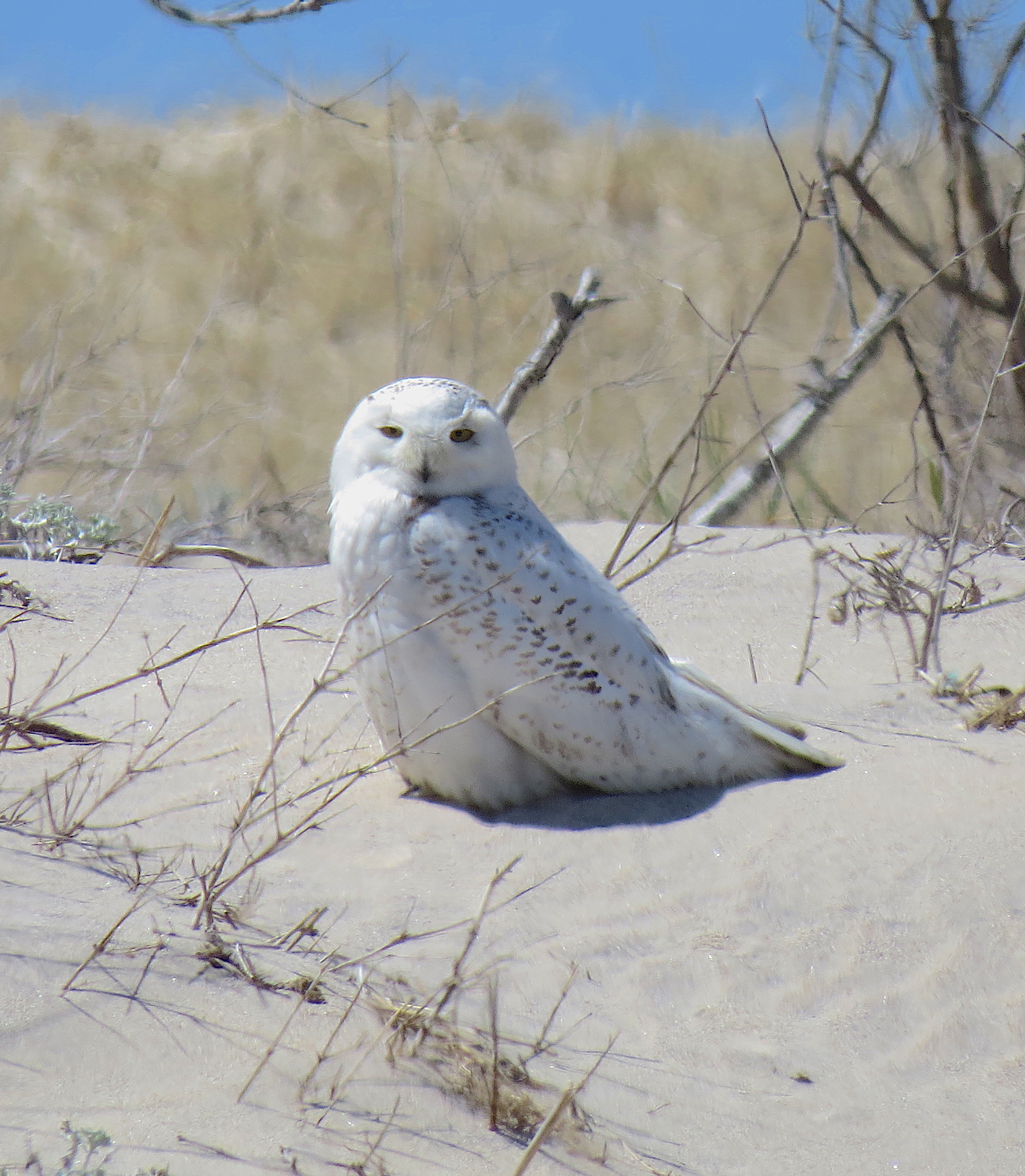
Among the interesting nature sightings this month were reports, and some photos, from Tim Treadwell and his colleagues with East Hampton Town’s Marine Patrol. They included a pod of dolphins and a right whale sighted off the beach, seals on the ocean beach and a snowy owl on the dunes.
From a distance, a right whale can be identified by its lack of a dorsal fin and its low, bushy, “V” shaped spout, the latter being apparent when viewed from ahead or behind. The distinctive spout is due to the wide separation between its two blowholes.
Last March, Chris Paparo photographed a right whale and her calf with the aid of a drone off East Hampton. Unfortunately, the North Atlantic right whale population is so low (336 survive in the world today) that scientists have a detailed catalogue of every one of them. As with other whale species, Paparo’s photograph enabled the mother to be identified as right whale #3720 by various unique markings and scars on its body, especially on the flukes. But with right whales, the key identification features are located at the other end of the whale: the callosities on their heads.
I always assumed these light-colored, sometimes distinctly orange-colored, raised patches were formed by a species of barnacle. Not so. Callosities are large patches of raised tissue that right whales are born with. At the time of birth, the callosities are dark-colored like the rest of the whale’s skin, but soon after birth it appears light-colored due to these patches being infested with one of several species of cyamids, a crustacean related to skeleton shrimp that is also known as “whale lice.”
The cyamids cannot swim and the newborn’s infestation relies on contact with other whales, most likely its mom. The cyamids cluster among the callosities, as this area of rough, irregular skin tissue provides safe places for them to anchor with their three pairs of rear claws. The cyamids mainly eat algae that settle on the whale. Within 10 months, the placement and unique pattern of the cyamid infested callosity is established.
One of our earliest nesters, bald eagles, are back at their respective nests, staking out their substantial nesting territory: a circle with a radius of approximately 2.5 miles centered on the nest tree. Five eagle nests were confirmed on the East End last year, and their large territories leave little room for more. Drawing five diameter circles around known nest sites, it appears that there’s only room for two more on the South Fork: one in the North Sea area and one in Montauk. Although there have been many eagle sightings on the North Fork, I’m not aware of any eagle nests there. I’m certain that will change soon. The East End pairs have successfully fledged at least one young per nest each year, and those young birds will be returning to their natal area to settle down and mate once they reach 5 years of age. Our oldest nesting pairs at Gardiners Island and Mashomack should now have a number of offspring looking for available territories.